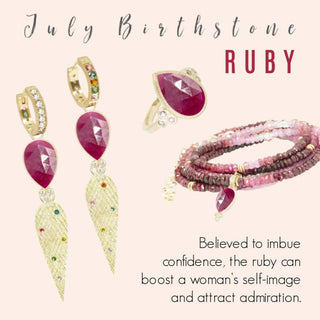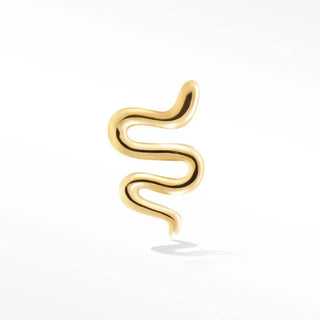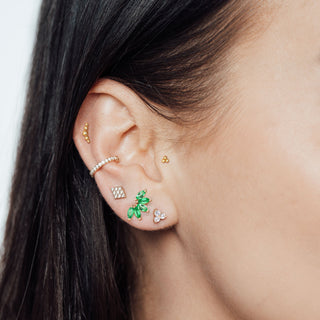Natural Diamonds vs Moissanite vs Lab Grown
Breaking down the Sparkle: A Comparison of Natural Diamonds, Moissanite, and Lab-Grown Gems.
One of the biggest differences between natural diamonds and lab-grown diamonds is the cost. Natural diamonds are formed over millions of years and are rare, which makes them more expensive. Lab-grown diamonds, on the other hand, can be made in a matter of weeks and are therefore more affordable. However, there are other factors that affect the cost of a diamond, such as the cut, color, clarity, and carat weight.
When it comes to the appearance of natural diamonds vs lab-grown diamonds, it can be difficult to tell the difference. Lab-grown diamonds are made using the same materials and processes as natural diamonds, which means they have the same physical and chemical properties. They also have the same hardness and durability as natural diamonds.
Another advantage of lab-grown diamonds is that they are more environmentally friendly. Mining for natural diamonds can have a negative impact on the environment, as it can require the removal of large amounts of earth and rock. Lab-grown diamonds, on the other hand, have a much smaller environmental footprint.
Despite these advantages, natural diamonds still hold a special place in the world of jewelry. They are prized for their rarity and their natural beauty. Many people also believe that natural diamonds have a certain romantic allure that lab-grown diamonds cannot match.
Ultimately, the choice between natural diamonds and lab-grown diamonds comes down to personal preference and budget. Some people are willing to pay more for a natural diamond, while others are perfectly happy with a lab-grown diamond that looks just as beautiful but costs less. It's important to do your research and weigh the pros and cons of each option before making a decision.
Repurposing or reusing diamonds is an environmentally friendly and sustainable option. The process involves removing the diamonds from old or unused jewelry and resetting them into new pieces. This process reduces the need for new diamonds to be mined, thus reducing the impact of diamond mining on the environment. Additionally, repurposing diamonds is a great way to preserve the sentimental value of an old piece of jewelry while giving it a new life. Repurposed diamonds can be used to create unique and personalized engagement rings or other pieces of jewelry. Many jewelers offer repurposing services and can guide customers through the process of selecting diamonds and designing a new piece. Not only is repurposing diamonds eco-friendly, but it also offers a more affordable option compared to buying new diamonds.
Moissanites vs Natural Diamonds
When it comes to jewelry and cost, natural diamonds and moissanites have some notable differences. One of the main differences is the price point. Natural diamonds are generally more expensive than moissanites because of their rarity and the high demand for them. On the other hand, moissanites are lab-created and therefore more affordable.
Another difference is in their physical properties. Moissanites are known for their brilliance and fire, which refers to the way they reflect light. They have a higher refractive index than diamonds, which means they can appear more sparkly and colorful than natural diamonds. However, some people prefer the classic look of natural diamonds and may not appreciate the extra sparkle of moissanites.
In terms of hardness, natural diamonds are the hardest substance on Earth, ranking 10 on the Mohs scale of mineral hardness. Moissanites, while still very hard and durable, are a bit softer and rank 9.25 on the Mohs scale. This means that over time, moissanites may show some wear and tear, whereas natural diamonds are more resistant to scratches and damage.
When it comes to ethical concerns, some people prefer moissanites because they are lab-created and do not involve any mining or potential human rights violations. Natural diamonds, on the other hand, can have a complicated supply chain, with some diamonds coming from conflict zones or being mined with questionable labor practices.
Ultimately, the choice between natural diamonds and moissanites comes down to personal preference and budget. Natural diamonds have a timeless quality and may hold sentimental value, while moissanites offer an affordable and ethical alternative with a bit more sparkle.
Moissanites are named after French chemist Henri Moissan, who first discovered the mineral in 1893 in a meteor crater in Arizona. Moissan initially thought that he had discovered diamonds, but later realized that the crystals were composed of silicon carbide, a compound that had not been previously found in nature. The name moissanite was given to the mineral in honor of Moissan's discovery and contributions to the field of chemistry.
Moissanites vs Lab created Diamonds
Lab-created diamonds and moissanites are two popular alternatives to natural diamonds in the jewelry market. Both offer similar visual characteristics to natural diamonds, but there are some differences in terms of their properties, cost, and production process.
Lab-created diamonds are grown in a lab using advanced technology that replicates the natural diamond formation process. They have the same physical, chemical, and optical properties as natural diamonds, but are created in a shorter period of time and are typically less expensive than natural diamonds. Lab-created diamonds are also considered eco-friendly as they have a lower impact on the environment than mining natural diamonds.
Moissanites, on the other hand, are created from silicon carbide and have a different chemical composition than diamonds. They have a unique sparkle and brilliance that is different from diamonds, and are generally less expensive than both natural and lab-created diamonds. However, some people prefer the look of diamonds and may not be as interested in moissanites.
When it comes to cost, moissanites are typically the least expensive option, followed by lab-created diamonds, with natural diamonds being the most expensive. However, the price of each stone can vary depending on the size, quality, and other factors.
Ultimately, the choice between lab-created diamonds, moissanites, and natural diamonds is a personal one that depends on individual preferences and values. Some people may prioritize environmental sustainability and choose lab-created diamonds, while others may prefer the uniqueness and lower cost of moissanites.

Diamonds vs Moissanites in summary
- Composition: Diamonds are made of carbon, while moissanites are made of silicon carbide.
- Hardness: Diamonds are the hardest known mineral, with a rating of 10 on the Mohs scale. Moissanites are also very hard, with a rating of 9.25 on the Mohs scale.
- Brilliance: Both diamonds and moissanites are known for their brilliance, but they reflect light differently. Moissanites have a higher refractive index than diamonds, which means they can appear more sparkly or flashy than diamonds.
- Color: Diamonds come in a range of colors, including white, yellow, brown, and pink. Moissanites are usually colorless, but they can have a yellow or green tint in some cases.
- Price: Moissanites are generally less expensive than diamonds, but the exact price difference will depend on the quality, size, and other factors.
- Rarity: Natural diamonds are rare and valuable, while moissanites are a lab-created alternative that is more readily available.
Both diamonds and moissanites have their unique features and characteristics that make them attractive options for jewelry. Choosing between them depends on personal preference and budget.
Here is a chart comparing the characteristics of Moissanite, Diamond, Cubic Zirconia (CZ), and Lab created Diamond:

Breakdown of the pricing structure of Moissanite, Diamond, Cubic Zirconia (CZ), and Lab Grown Diamond:
Conclusion
It ultimately comes down to personal preference and budget when deciding between natural diamonds, moissanites, and lab-grown diamonds. Natural diamonds are timeless and valuable, but come with a higher price tag. Moissanites offer a similar look at a more affordable price point, but may not hold their value as well over time. Lab-grown diamonds are a more ethical and sustainable choice, while also providing the same physical and visual properties as natural diamonds at a lower cost. By using the comparison table, you can weigh the pros and cons of each option and make an informed decision based on your individual needs and preferences.
What our customers are saying about us?
THE NINA WYNN BLOG

✨ "Hearts & Dragons" – A Lunar New Year, Valentine's & Galentine's Celebration ✨
Step into a world where Lunar New Year traditions blend seamlessly with the romance of Valentine's Day and the camaraderie of Galentine's Day.

July birthstone Ruby
There’s a lot of history behind birthstones and ruby in particular. It's one of the most well-recognized gems. Ancient Hindu culture held Ruby in high regard. In fact, many ancient...

The Timeless Charm of 14k Yellow Snake Earrings
There's something undeniably enchanting about the allure of snake-themed jewelry. With its rich history and symbolic significance, this motif has captivated designers and wearers alike for centuries. My fascination...

Unveiling the Splendor: Wild Lotus Emerald Flat Back Earrings
Immerse yourself in the essence of spring and the enchantment of the Emerald, especially as we celebrate it as the May birthstone, with our captivating Wild Lotus Emerald Flat...


